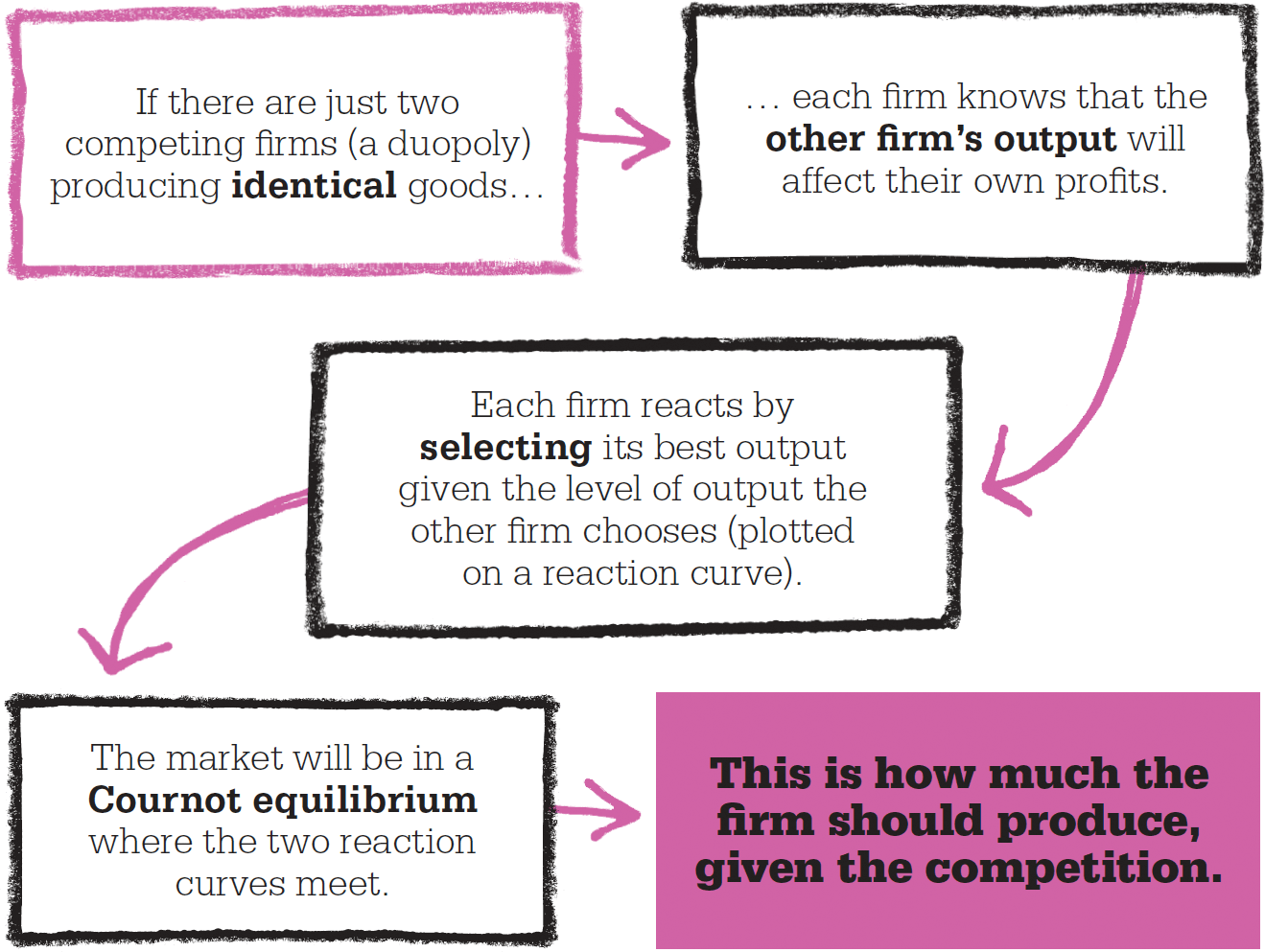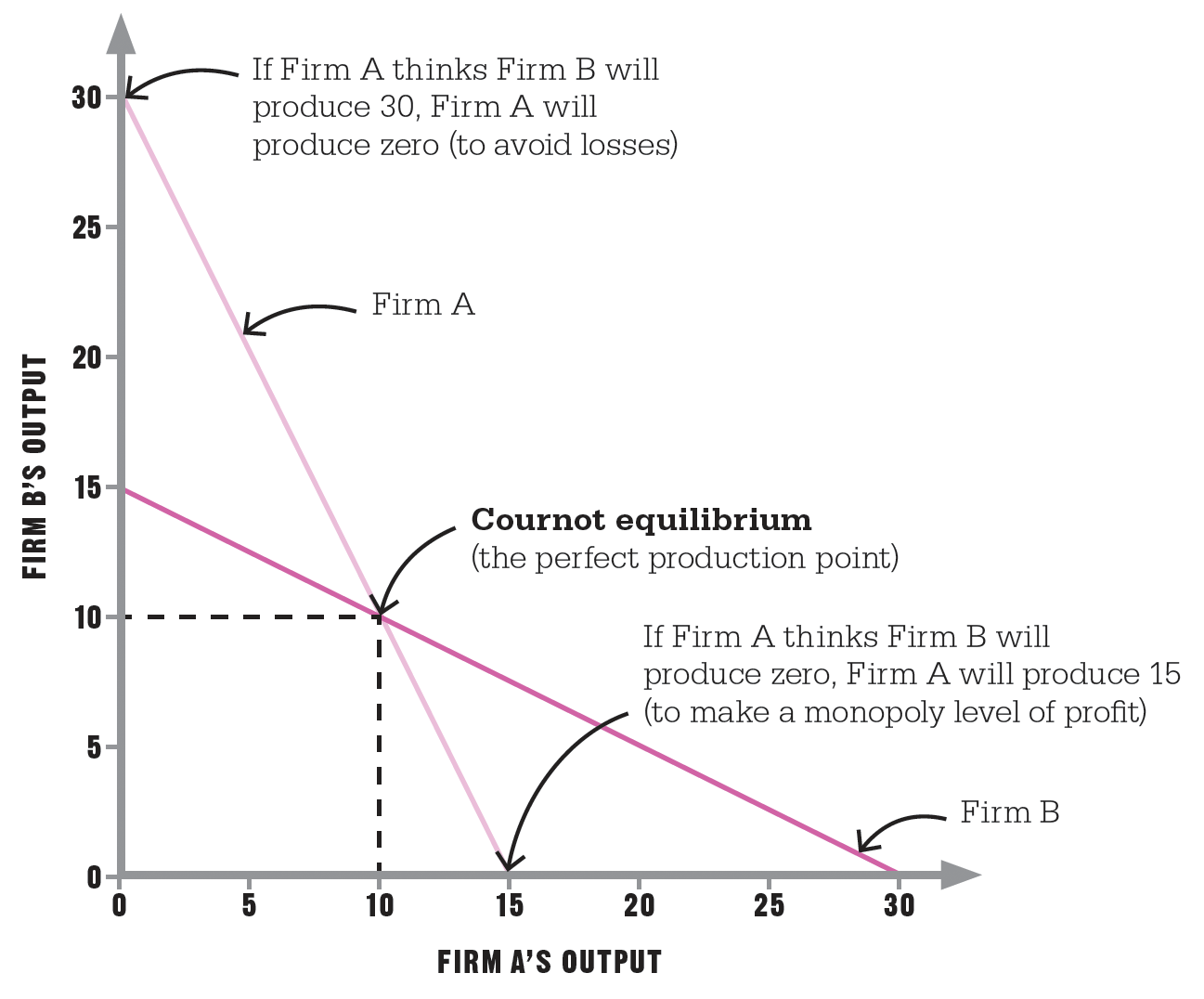

Markets and firms
Antoine Augustin Cournot (1801–77)
Joseph Bertrand (1822–1900)
1668 German scientist Johann Becher discusses the impact of competition and monopoly in his Political Discourse.
1776 Adam Smith describes how perfect competition maximizes social welfare.
1883 French mathematician Joseph Bertrand changes the strategic choices in Cournot’s model from quantity to price.
1951 US economist John Nash publishes the general definition of equilibrium for game theory, using Cournot’s duopoly as his first example.
By the second half of the 17th century economists had begun to observe the effects in markets of monopolies and of fierce competition. They found that monopolies tended to restrict output to keep prices and profits high. Where there was plenty of competition, prices were driven down to the level of costs, profits were low, and output was high. French economist Antoine Cournot wanted to find out what happened when there were only a few firms selling similar products.

Cournot created his model based on a duopoly of two firms selling identical spring water to consumers. The two firms are not allowed to form a cartel by working together, no other firms can enter the industry (because there are no other natural springs), and each firm has to decide, simultaneously, how many bottles of water to supply.
The total output of the industry is the sum of the two firms’ output decisions. Each firm must choose the output that maximizes its profit based on what it thinks the other firm’s output will be. If Firm A thinks that Firm B will produce nothing, Firm A will select the low output of a monopolist to maximize profits. On the other hand if Firm A thinks that Firm B will produce a high output, Firm A may choose to produce nothing—because prices would fall too far to make production worthwhile. Cournot represented the decisions of both firms on a “reaction curve.” The equilibrium of the market is where the two reaction curves intersect. At this point each firm is selling the most profitable amount given what the other firm is doing. This notion of equilibrium became known as the Nash equilibrium, and it is a central plank of game theory, the branch of modern economics that analyzes strategic interaction between firms and individuals.
Cournot used mathematics to find this equilibrium and prove that the duopolists would choose an output that was higher than would occur in monopoly, but lower than with perfect competition. In other words a few firms would be better for society than a monopolist, but worse than perfect competition.
From this starting point, Cournot extended the model to show how, if the number of firms increases, the industry output reassuringly moves closer to the level expected for perfect competition. Cournot’s model was developed by French economist Joseph Bertrand, who showed that if firms choose by their desired price levels rather than output, the equilibrium for duopolists equals that of perfect competition. This is because any firm that sets a high price will be undercut by another, who will then steal all its buyers. In this way the price will be driven to the most competitive level.

Cournot’s model uses two reaction curves to illustrate the output decisions of two firms, where each firm is aware of the other’s existence but does not know how much the other intends to produce.
An insatiable reader, Antoine Augustin Cournot was born in France in 1801. Although relatively poor, he studied mathematics at one of the best schools in the country and completed a PhD in engineering. After spending some time as a private tutor and as a secretary for one of Napoleon’s generals, he became a university lecturer and then professor. Cournot was plagued by eye problems but managed to publish several works that pioneered the use of mathematics in economics, before going blind. His work was not well received in his lifetime because of its reliance on novel mathematical notation. Today he is regarded as a profound thinker who advanced prophetic ideas.
1838 Researches into the Mathematical Principles of the Theory of Wealth
1863 Principles of the Theory of Wealth
See also: Cartels and collusion • Monopolies • The competitive market • Game theory